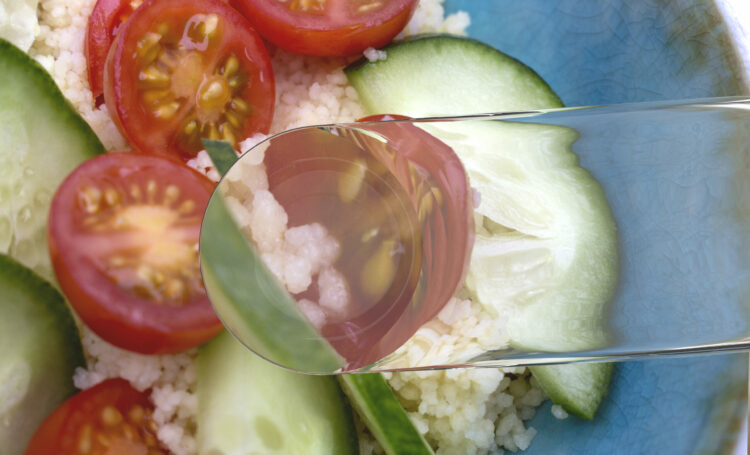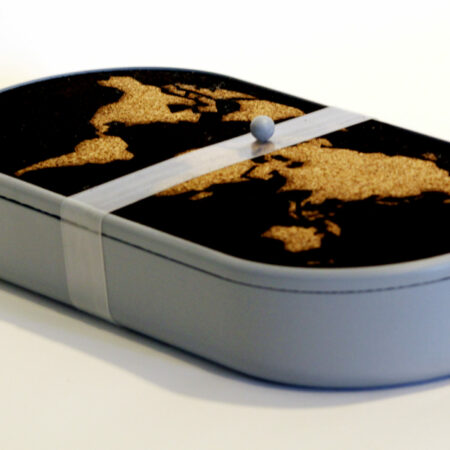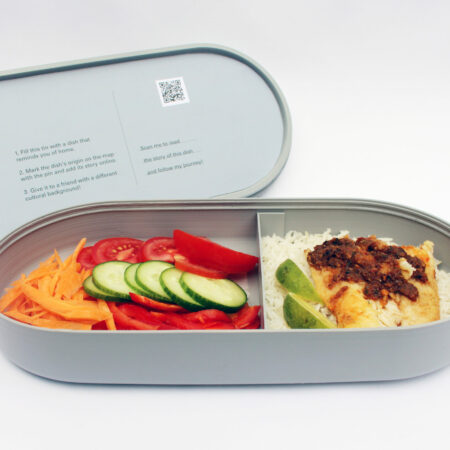Food design for Bliss
Project by Carola Breuer
Supervised by Rick Schifferstein and Anna Pohlmeyer
People nowadays are spending less time with their food than any generation before them, and eating has evolved into an activity that many people perform without much awareness (Charles Spence, 2017). This estrangement may cause a decay of the amount of knowledge about food, as well as a decrease in appreciation of the meal. Examples are watching TV, working, walking or driving. In contrast, what makes a meal memorable to people covers not only the sensory and hedonic experiences elicited by the food but also the company, the location, and the particular atmospherics (Jacobsen, 2008; C. Spence & Piqueras-Fiszman, 2014). This is noteworthy because eating has the potential to give positive experiences, but not being conscious and aware can limit the satisfaction let alone happiness that can be gained in the eating experience.
Carola Breuer was interested in enhancing people’s eating experiences, in order to make them more blissful. Seligman (2011) distinguishes between five elements that can contribute to a person’s wellbeing: positiveemotions, engagement, positive relationships, meaning, and accomplishment. While well-being can be enhanced by all elements, not all have to be fulfilled in order to thrive. A number of activities and thinking strategies (e.g. expressing gratitude, acts of kindness, savoring, optimism, committing to one’s goals) have been shown to lastingly increase happiness (Lyubomirsky, 2007; Seligman, 2011).
Design can play a role in facilitating and supporting these elements (Pohlmeyer, 2012). In this project, the strategy of savoring, which can be best described as an active process of enjoyment (Bryant & Veroff, 2007), was chosen as the main strategy to create blissful eating experiences. Three concepts were developed to assist people in savoring their home eating experience: the mindful spoon, the sharing plate and the travelling tin.
The mindful spoon targets people eating alone. It is a spoon-shaped object, which is held in a special way to draw attention to the sensory characteristics of food, in order to increase the joy of eating. The integrated lens magnifies food and allows you to see details that are otherwise only known from macro photography. The concept draws a closer look at what exactly is on the plate. This can help to appreciate its quality and rediscover a positive relationship with food.


The sharing plate focuses on couples eating together. It is a uniquely shaped plate that inspires people to serve their food in a creative way that promotes contact by eating food from the same plate. The plate is used by sitting down together on two chairs facing each other and balance the plate on your laps. You can arrange the main ingredients on the elevated central area and put extras like sauces or salad in the deep neighboring bowls. The sloped sides allow to put down cutlery. Because the plate rests on the eaters’ legs, it connects the couple in a physical way and requires collaboration. This encourages teamwork and conversations that support the relationship in everyday life.

The travelling tin is for sharing food, exchanging information about each other’s cultures, and building memories. It is a box that can be filled with homemade food and passed on to a person with a different cultural background. The origin of the food can be indicated on the map that is displayed on the lid. The marks visualize the journey of the box over time and encourage passing it on to someone new. Additionally, information about the food and its recipe can be added online through a QR code. Users are encouraged to give the filled tin to a friend from a different cultural background and follow its journey online or on social media. This connects people with different cultural backgrounds and encourages random acts of kindness.


References
Bryant, F. B., & Veroff, J. (2007). Savoring: A new model of positive experience. Mahway, NJ: Lawrence Erlbaum.
Jacobsen, J. K. (2008). The food and eating experience. In Creating experiences in the experience economy (pp. 13–32). Cheltenham: Edward Elgar
Lyubomirsky, S. (2007). The how of happiness: A new approach to getting the life you want. New York: Penguin.
Pohlmeyer, A. E. (2012). Design for happiness. Interfaces, 92, 8–11.
Seligman, M. E. P. (2011). Flourish. New York: Free Press.
Spence, C. (2017). Gastrophysics: The new science of eating: Penguin UK.
Spence, C., & Piqueras-Fiszman, B. (2014). The perfect meal: The multisensory science of food and dining. Chichester, UK: Wiley.
Want to read more about this project?
Download Carola’s report
